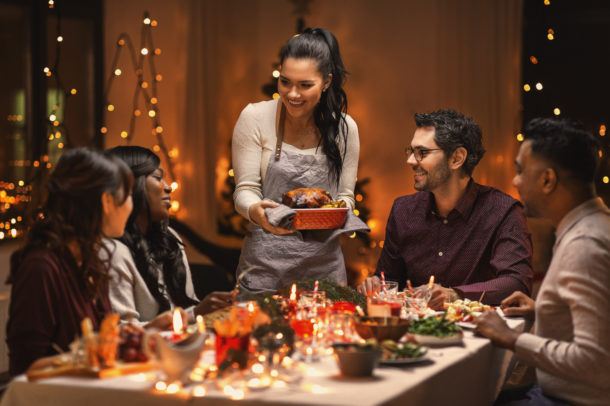By Dani Renouf, RD, MSc, CDE
Winter solstice is the longest night of the year and usually falls on December 21 or 22 in the Northern Hemisphere, marking the transition of seasons from autumn to winter. The celebration of the winter solstice is an ancient tradition that dates back over 4,000 years and has served as a basis for our current holiday celebrations, such as Christmas and Hanukkah. These celebrations centre around ceremonies that include food, sharing abundance, and sending positive messages about health for the colder months to come.
Indigenous peoples of Canada have unique traditions celebrating the winter solstice including themes of resting, enjoying food together by sharing the land’s bounty, reflecting on the past year’s learnings, and looking forward to the “new sun” of the future by setting intentions for the upcoming year. As Canadians, acknowledging these ancient ways of celebrating honours the First Peoples, the culture of the land, and those who have lived here for thousands of years. Enjoy a recipe from our Indigenous collection for your solstice celebration, like this Red Berry Relish or Baked Walleye.
Yalda, or Shabhe-Yalda (Yalda Night), is an ancient Iranian tradition that celebrates the end of the darkness and the beginning of light since the days become longer again after Yalda. Filled with merriment on the Long Night, families gather over a large sofreh, a table with settings and platters, to enjoy pomegranates, watermelon, persimmons, nuts, and dried fruit. Some people add sweet treats as well. The red fruits on the Yalda table represent life’s sun, light, and energy. This Fresh Cranberry Torte fits the theme. Families also enjoy reading poetry from the Persian poet Hafez and creating an atmosphere of hope for the days ahead.
Saturnalia, the ancient Roman festival, is the most likely to be linked to our modern Christmas celebrations. This festival, marking winter solstice, focuses on the planting season. It includes a variety of foods and courses: grape juice cake as an appetizer, a honey wine made with several plants and spices (Mulsum), chicken with hazelnuts and squash as the main course, and a peppered honey cake with hazelnuts for dessert. The similarities between foods and the table settings for Saturnalia indicate that it inspired some of our festive traditions today, like including poultry in holiday meals. Try our Cranberry Margarita, Roast Turkey and Apple Cranberry Cake for a traditional Canadian Christmas meal.
Dog Zhi translates into “arrival of winter” in Chinese. This festival dates back 2,500 years in China. This festival marks the time for families to get together, celebrate the year they have had, and enjoy the bounties of the end-of-harvest time. Special foods include tang yuan (glutinous rice balls), dumplings, mutton soup, eight treasures porridge, and daikon.
St. Lucia’s Day is a festival of lights celebrated in Scandinavia to mark the winter solstice and involves traditions from earlier Norse celebrations. Families celebrate by asking the eldest daughter in the home to dress in white and serve coffee and baked goods, such as saffron bread (lussekatter) and ginger biscuits, to the other members of the family. St. Lucia’s Day marks the beginning of the Christmas season in Scandinavia. Try our Molasses Ginger Cookies to get your holiday started.
In 1898 researchers who made expeditions to Antarctica during its darkest months of the year in the Southern Hemisphere started Antarctica’s winter solstice celebration. As the access to food is limited in Antarctica, people collect their best food goodies to save them for the Midwinter meal. Everyone contributes their food treasures, including wine, cheese, biscuits, spirits, and other delicacies, to make a feast in a place where food is difficult to come by.
Indeed, there are many other ancient food traditions marking winter solstice that you can read about and incorporate into your modern celebrations. No matter where you are and how you celebrate, one theme that remains the same through time is gratitude for the food and meals we share.
References:
https://www.britannica.com/list/7-winter-solstice-celebrations-from-around-the-world
https://www.travelchinaguide.com/essential/holidays/dongzhi-festival.htm
https://www.britannica.com/topic/St-Lucias-Day
https://www.coolantarctica.com/Community/midwinter_antarctica.php
